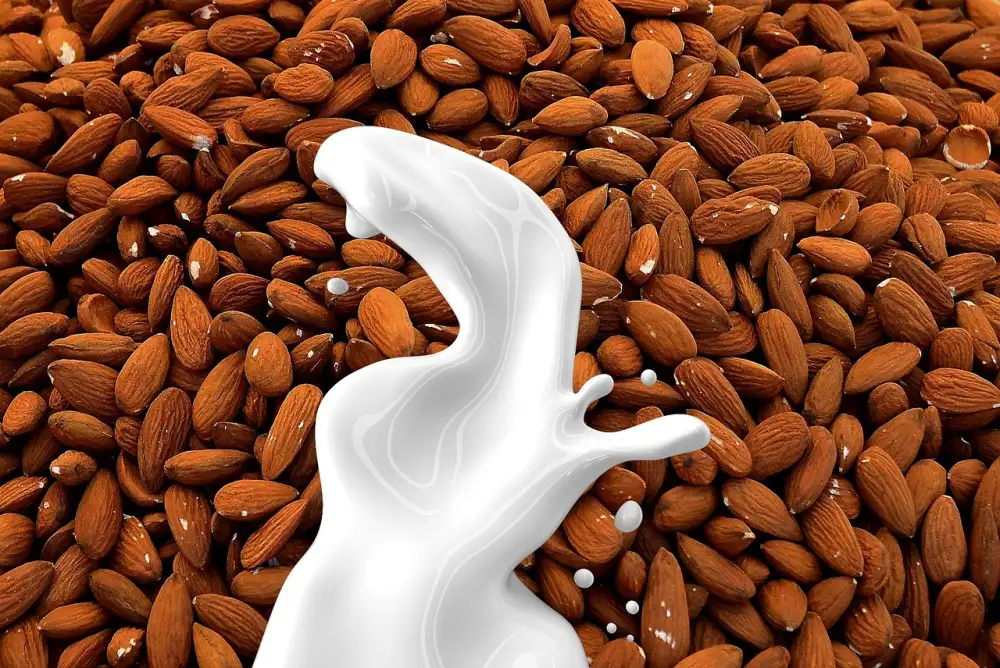Unveiling the Shelf Life of Almond Milk: Does Almond Milk Go Bad? Find Out the Spoilage Signs and Health Implications

Almond milk has gained popularity in recent years as a dairy-free alternative that offers numerous health benefits. Made from ground almonds and water, this plant-based milk is not only delicious but also packed with essential nutrients. However, like any other perishable food product, almond milk has a limited shelf life. It is important to understand the factors that affect its spoilage and how to identify signs of deterioration. In this article, we will unveil the shelf life of almond milk, discuss the factors that impact its freshness, explore the signs of spoilage, and highlight the importance of checking for spoilage. Additionally, we will provide some tips on how to extend the shelf life of almond milk and ensure its safety for consumption. So let's dive in and uncover all there is to know about almond milk spoilage!
Shelf life of almond milk
Shelf life refers to the period during which a product can be stored before it starts to deteriorate or become unsafe to consume. When it comes to almond milk, its shelf life varies depending on various factors. On average, unopened almond milk can last for about 7-10 days in the refrigerator. However, once opened, it should be consumed within 7-10 days for optimal freshness and taste. It is important to note that these are general guidelines and the actual shelf life may vary based on the brand and storage conditions.
Factors affecting the shelf life
Factors affecting the shelf life of almond milk include the processing method, packaging, and storage conditions. Almond milk that has undergone ultra-high temperature (UHT) processing typically has a longer shelf life compared to refrigerated or homemade almond milk. The type of packaging used, such as aseptic cartons or bottles, can also impact the shelf life. Additionally, exposure to light, heat, and air can accelerate spoilage, so proper storage in a cool and dark place is crucial for extending the shelf life of almond milk.
Signs of spoilage in almond milk
Signs of spoilage in almond milk can be easily identified if you know what to look for. The first sign is a sour or off smell. If your almond milk smells rancid or has a strong, unpleasant odor, it is likely spoiled. Another indicator is the appearance of clumps or curdling. If you notice any lumps or chunks in your almond milk, it is a clear sign that it has gone bad. Additionally, changes in color and texture can also indicate spoilage. If your almond milk looks discolored or has become thick and slimy, it is best to discard it. Lastly, taste is an important factor to consider. If your almond milk tastes sour or bitter instead of its usual mild and nutty flavor, it may have spoiled. Always trust your senses when determining if your almond milk has gone bad.
Importance of checking for spoilage
Checking for spoilage in almond milk is of utmost importance to ensure food safety and prevent any potential health risks. Consuming spoiled almond milk can lead to foodborne illnesses, such as stomach cramps, diarrhea, and vomiting. It is crucial to be vigilant and inspect the almond milk before consuming it. By checking for signs of spoilage, such as a sour smell, curdling, or unusual texture, you can avoid consuming contaminated almond milk and safeguard your health. Remember, it's better to be safe than sorry when it comes to your well-being.
Tips for extending the shelf life
To extend the shelf life of almond milk, there are a few simple tips to keep in mind. First, always store almond milk in the refrigerator at a temperature below 40°F (4°C). This will slow down the growth of bacteria and help maintain its freshness. Additionally, make sure to tightly seal the container after each use to prevent air and moisture from entering.
Another tip is to avoid cross-contamination by using clean utensils when scooping out almond milk. This will prevent any bacteria from being introduced into the container. It's also important to check the expiration date before purchasing almond milk and consume it before that date for optimal freshness.
If you find yourself with more almond milk than you can consume within its shelf life, consider freezing it. Almond milk can be frozen for up to three months without affecting its taste or quality. Just make sure to transfer it to an airtight container before freezing and leave some room for expansion.
Lastly, if you notice any signs of spoilage such as an off smell or unusual texture, discard the almond milk immediately. It's better to be safe than sorry when it comes to consuming spoiled food products.
By following these tips, you can extend the shelf life of your almond milk and enjoy its creamy goodness for longer periods while ensuring your health and safety.
In conclusion, almond milk is a nutritious and delicious alternative to dairy milk. However, it does have a limited shelf life and can spoil if not stored properly. It is important to be aware of the signs of spoilage, such as changes in color, texture, and smell. Consuming spoiled almond milk can lead to foodborne illnesses and should be avoided. By following proper storage guidelines and regularly checking for spoilage, you can extend the shelf life of your almond milk. So go ahead and enjoy this plant-based beverage while it's fresh and safe to consume!
Published: 10. 01. 2024
Category: Health



